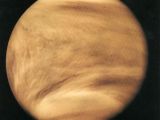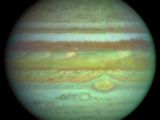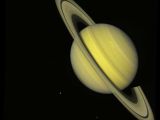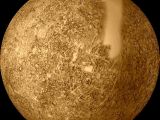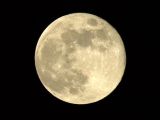This week, we will have a real "traffic jam" in the night sky. Four planets in our solar system plus the Moon will be visible even with the naked eye in the western sky. They are the closest planets to the Earth, but only for a brief period of time in a whole year can they be seen together in the sky.
Amateur and professional skywatchers, look out! The big light show will begin about 45 minutes after sundown. You don't really have to be in a dark area, because if you have the patience to look at the sky long enough to find all four planets, I think it will be worthy.
So, announcing the main attractions of this week's show, in the order of appearance: Mercury, the innermost and smallest planet in the solar system; Venus, bright enough to show through the blue sky soon after sunset and often mistaken for a star and even an UFO at its maximum brightness; Jupiter the gas giant and the biggest planet of the solar system, named after the supreme god of the Romans; Saturnan unexpected visitor between Jupiter and Venus.
All right, let's see! The brightness of a star is measured in apparent magnitude as seen from an observer on Earth and the value of the magnitude decreases as the brightness of the star increases, the star Sirius is the brightest in the sky, with an apparent magnitude of -1.5. For comparison, the Sun has a magnitude of -26.73.
The first and most obvious is Venus, which reaches its maximum brightness shortly before sunrise or shortly after sunset, this month, for which reason it is often called the Morning Star or the Evening Star.
Being the brightest object in the night sky after the Moon (more than 13 times brighter than Sirius), it reaches a maximum apparent magnitude of -4.6 and it will be easy to spot at its greatest height in the evening twilight for the year 2007, to the left of the moon.
It can be found almost 40 degrees above the western horizon at sunset. The degrees can easily be measured without instruments, as the clinched fist of a person at arm's length is almost 10 degrees in width, so counting four fists up from the horizon should give the position of Venus, in case the Moon is not visible. It will be an impressive sight, and it has often been mistaken for a strange new star, or even an UFO.
Another planet is making its appearance as a brilliant light. Jupiter will rise around 9:30 p.m. GMT, but it's already above the horizon as darkness falls. The largest planet of our solar system, named after the supreme god of the Romans, will have a maximum apparent magnitude of -2.8, which will make it the fourth brightest object in the night sky.
Jupiter can be seen in the sky either by finding Antares - the red heart of Scorpius, the Scorpion, having a magnitude of 1 - or by tracking the full moon, which will be passing to the south of Jupiter during the dawn hours of June 1.
A newcomer to the light show is Saturn, which will appear between Jupiter in the southeast and Venus in the northwest. It will look like a yellowish-white "star" almost at the intersection of Leo and Cancer, around -11 degrees west, to the lower right of the brightest star in the Leo constellation.
The sixth planet from the Sun, the ringed gas giant is also the second largest planet in the solar system and can reach a maximum magnitude of 0. This week, it will set not long after midnight (GMT) and can be found a little more than halfway up in the southwest sky, for the whole month of May.
The last, and lowest, attraction will be planet Mercury, the innermost and smallest planet in the solar system. Its maximum magnitude will be of -2.0, and will be a strong competitor in brightness for even the most brilliant stars, Sirius and Canopus.
It can be found far to the lower right of Venus, near the west-northwest horizon, and will be the brightest "star" in the area. Thus, it should be easy to spot with the naked eye as it sets near the end of the evening twilight.
Closing the show, theMoon is not to be overlooked, although it may be the most familiar light in the night sky. At its peak, the Moon can have a maximum magnitude of -12.74, and can produce enough light to be a good guide for the night travelers.
In conclusion, this week will be great for all those who will want to take a closer look at the sky, and if no clouds ruin the show, it really won't be a waste of time to gaze at the stars, and, why not, maybe even make a wish.
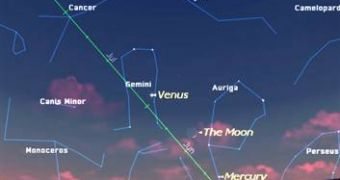
 14 DAY TRIAL //
14 DAY TRIAL // 
